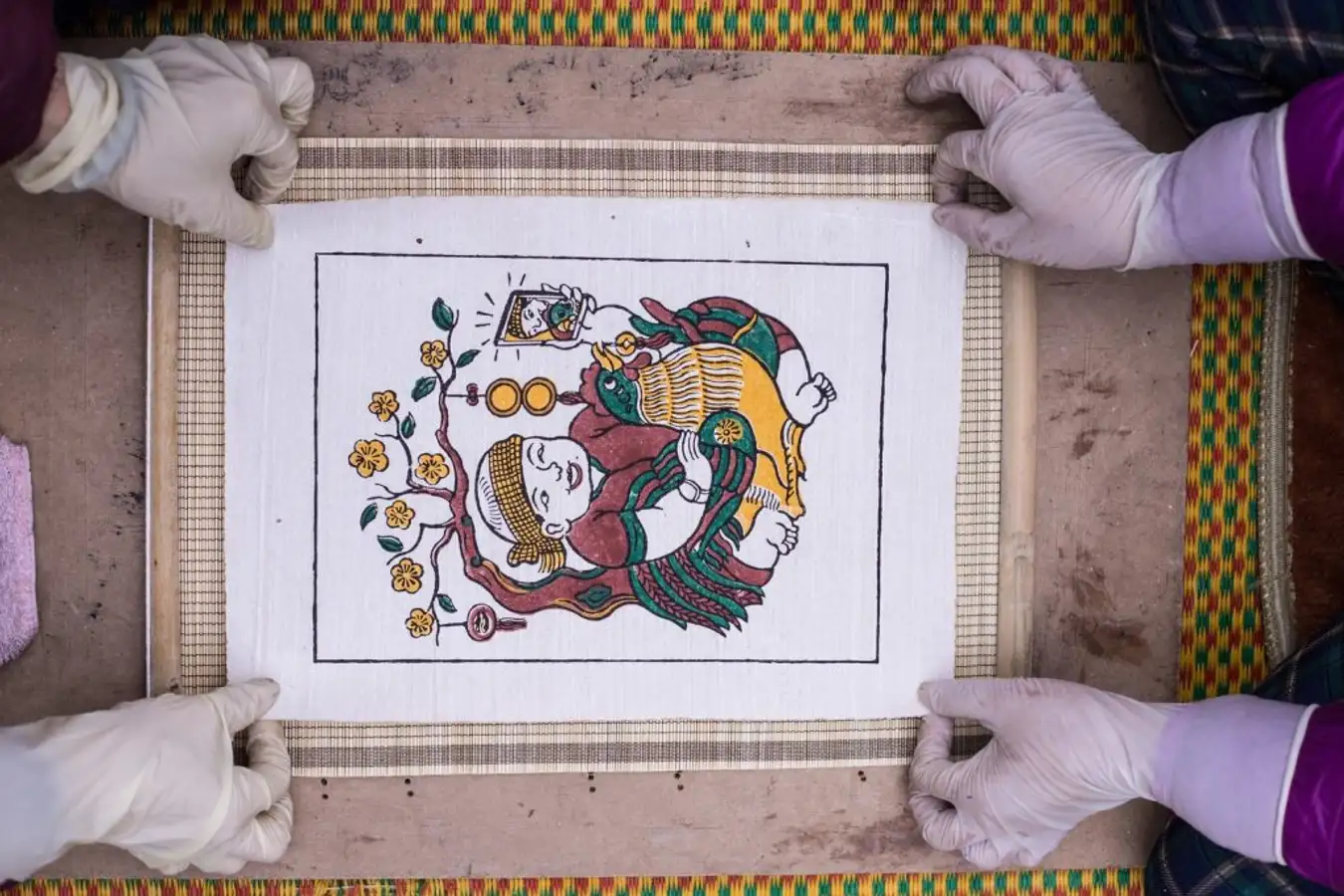
Photo: Ivivu
If you ever have a chance to visit Vietnamese households in the Northern Delta, you probably catch yourself looking at a pigmented colorful mouse wedding or pigs with Yin & Yang circles on their bodies as decoration in their house. They are called Dong Ho folk paintings, one of the most long history and cherished art forms in Vietnamese cultural beauty.
1. What is Dong Ho painting? Where is its origin?
Dong Ho painting's name came from its origin: Dong Ho Village in Song Ho commune, Thuan Thanh district, Bac Ninh province, which is located in the north of Vietnam.
In more than 400 years of history, Dong Ho art has retained a fine combination of traditional rustic lifestyle, artistic values, and Vietnamese ideology. Unlike other abstract art forms, Dong Ho paintings are quite explicit in delivering their messages, most of them featuring folk tales, historical figures, wishes for prosperity and achievements, and social activities.
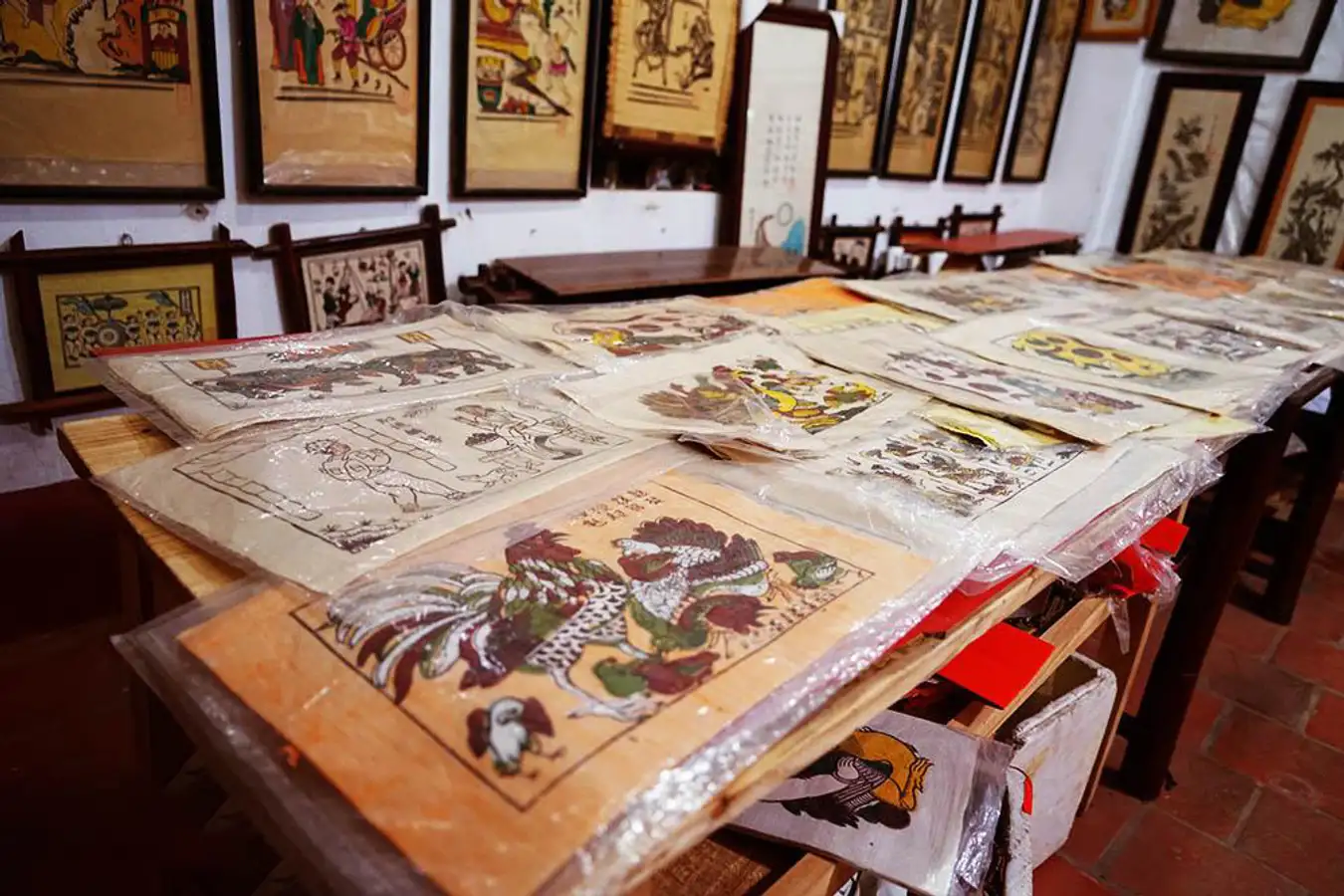
Photo: Eva.vn
When our lives in the past were difficult and lacking, purchasing a piece of vibrant Dong Ho painting to decorate in Tet Holidays was considered a treat, not only making the house look more vivid but also hoping for the better in the upcoming year. As time has passed, Dong Ho painting remains a significant aspect of Vietnamese traditional culture, especially as Vietnam is making strides in submitting Dong Ho folk paintings to UNESCO for consideration as intangible cultural heritage in 2020.
Some famous paintings from Dong Ho Village can be named such as “Yin & Yang Pigs” demonstrating a balanced and prosperous life, “catching coconuts” and “scene of jealousy” representing Vietnamese social commentaries, and “Mouse wedding” satirizing the old backward feudal regime.
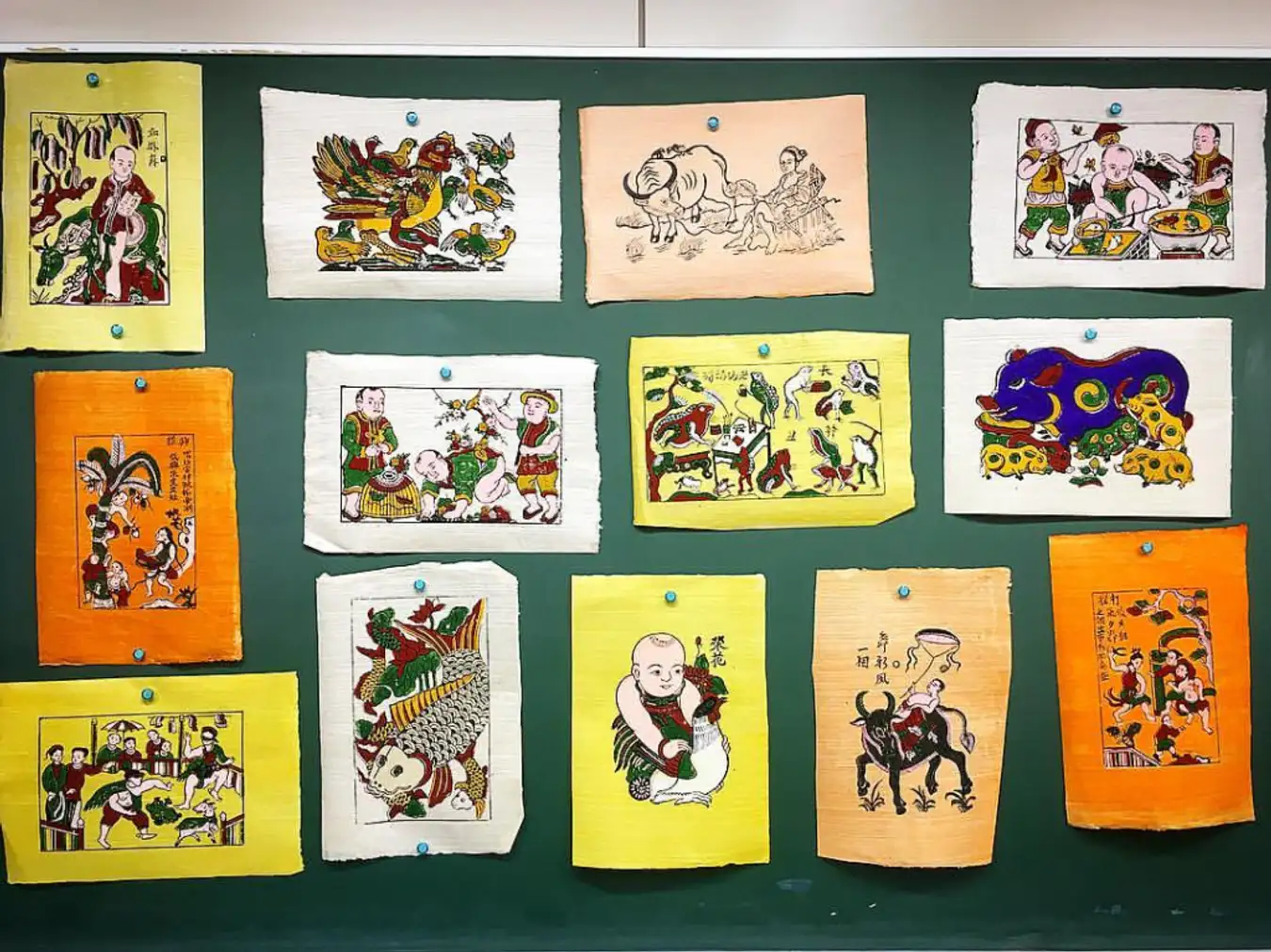
Photo: Collected
2. How to produce Dong Ho paintings?
Artists from Dong Ho Village in the process of making unique and iconic paintings have distinguished themselves with three well-blended elements: painting paper, traditional colors, and woodcut techniques.
First, a method and natural materials to ensure the paper’s quality are interesting. “Dó” tree barks need to be soaked for two to three days and cooked until fragrance, then they will be pounded into a sticky consistency. Next, people in the village use a special tool called “liềm seo” (bamboo frame) to put in water consisting of “dó” result, and such additions as seashells and glutinous rice flour repetitively and wait for them to dry a few days after. Seashells provide a bright white base, while glutinous rice adds flexibility to the paper and helps preserve colors for an extended period.
Therefore, the printing papers in Dong Ho art form are so soft, thin yet durable, and capable of taking in colors without smearing or smudging.
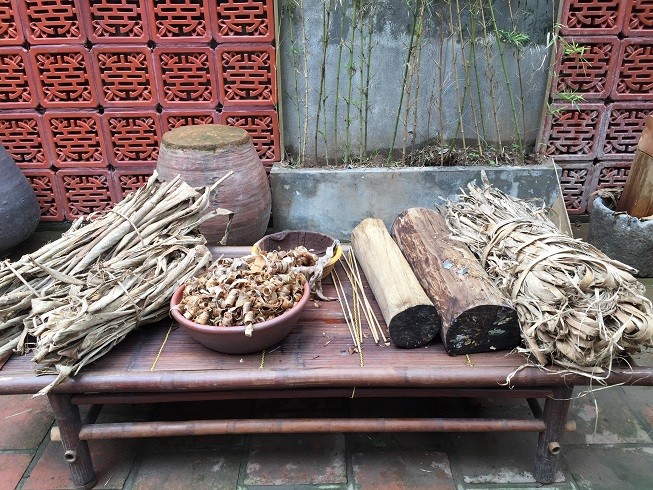
Photo: Laodongthudo.vn
Second, the base colors in every Dong Ho painting are utterly deprived of natural sources, which are more common in far-flung Northern provinces of Vietnam. For example, red is from gravel or stone, black is from burnt leaves or ashes of firewood, lily flowers for yellow, and cajuput leaves for green. Because these colors are solely sourced from nature without artificial chemicals, the painting's basic pigments possess unique durability and retain the scent of their natural components, contributing to the long-lasting trait of Dong Ho paintings.
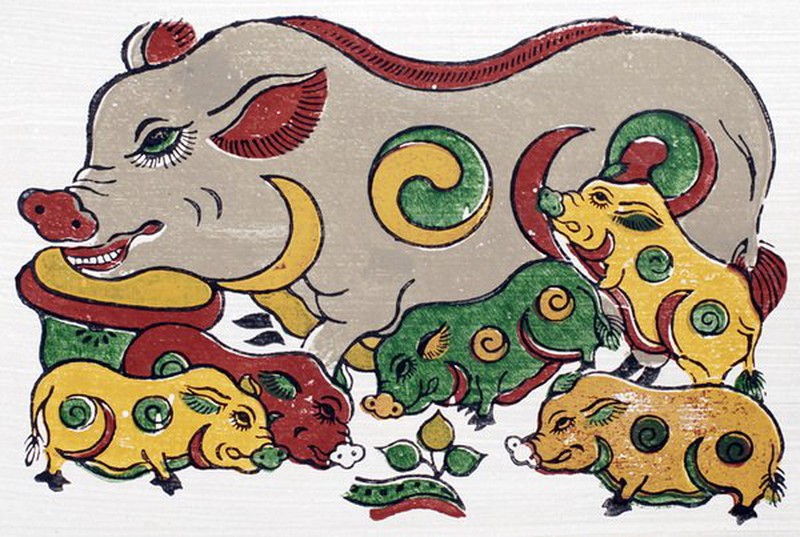
Four base colors in Dong Ho Paintings: Red, Black, Green, and Yellow (Photo: Collected)
Last but not least, Dong Ho paintings have another name which is Dong Ho folk woodcut painting by its unique traditional techniques. Even though the process is called “printing”, it is definitely not as easy as you may think. One painting requires at least five different woodblocks with slight changes to be complete, and because each pattern frame will be put in use through generations, craftsmen must outline and crave every little detail by hand meticulously.
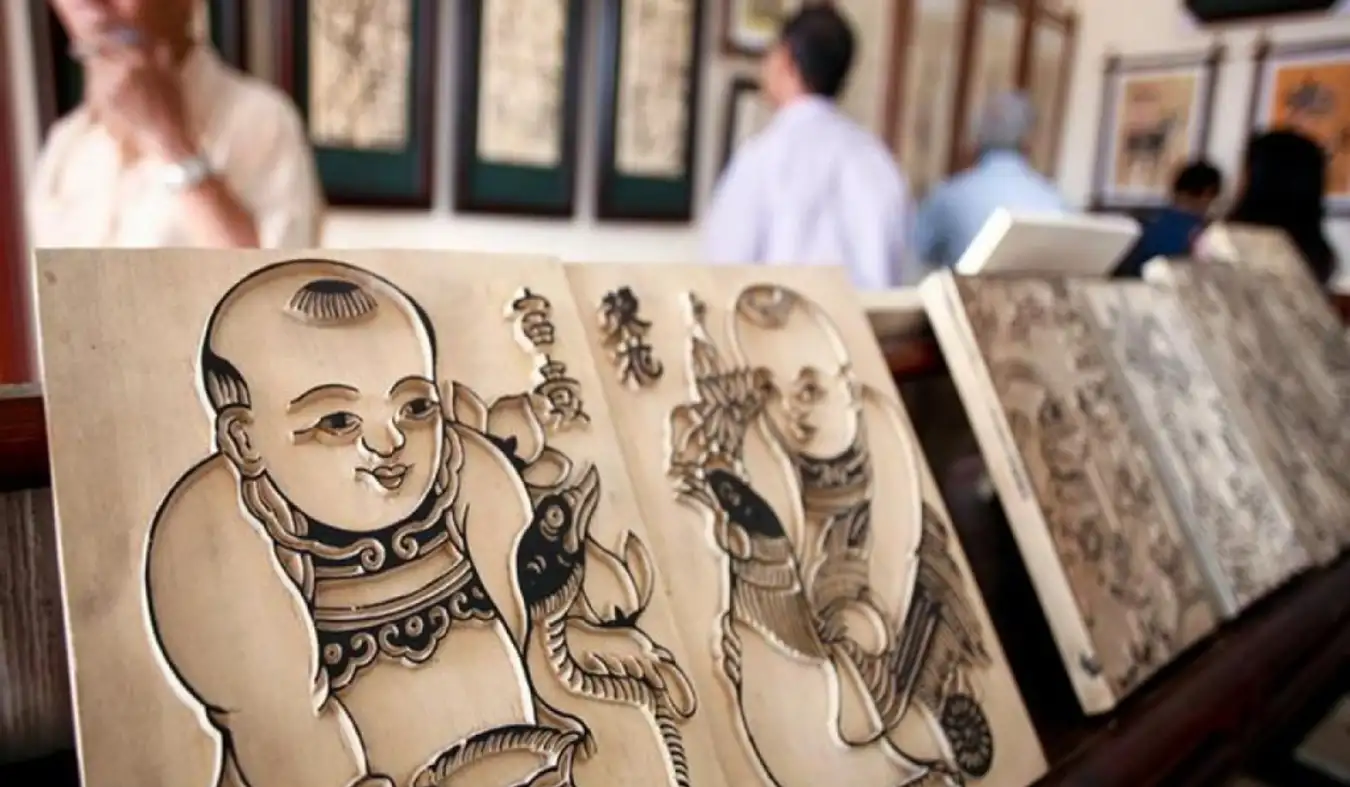
Photo: Collected
Next, with everything ready for the final stage: papers, colors, and woodcuts, experienced artisans in Dong Ho Village apply natural colors neatly to the first woodblock and press it hard onto the paper. They will continue to repeat the step with another color and carvings until the result encapsulates the layout and hues of their satisfaction. Then, the dried painting needs to be protected by a layer of sticky rice paste or “hồ nếp” in Vietnamese to retain its hard-earned colors for a long time.
3. How to get to Dong Ho Village?
Dong Ho Village is only 35 kilometers away from the capital city of Hanoi, travelers can hop in a motorbike or any private transport through the National Highway 5 (head to Hai Phong City) or catch Bus 204 to Thuan Thanh, Bac Ninh with less than $2.
When tourists arrive in Dong Ho Village, this place is so Instagram-worthy that you can capture colorful handmade paintings and the unique process behind them everywhere. Dong Ho Painting Center is where you learn how to make legitimate Dong Ho art forms from artisans, their experienced hands keep working while telling you about the traced-back history and the meaning of each distinctive piece. International visitors can also immerse themselves in the authentic and lively atmosphere of the Dong Ho Folk Painting Festival, which takes place in March (based on the lunar calendar) from the 14th to the 16th.
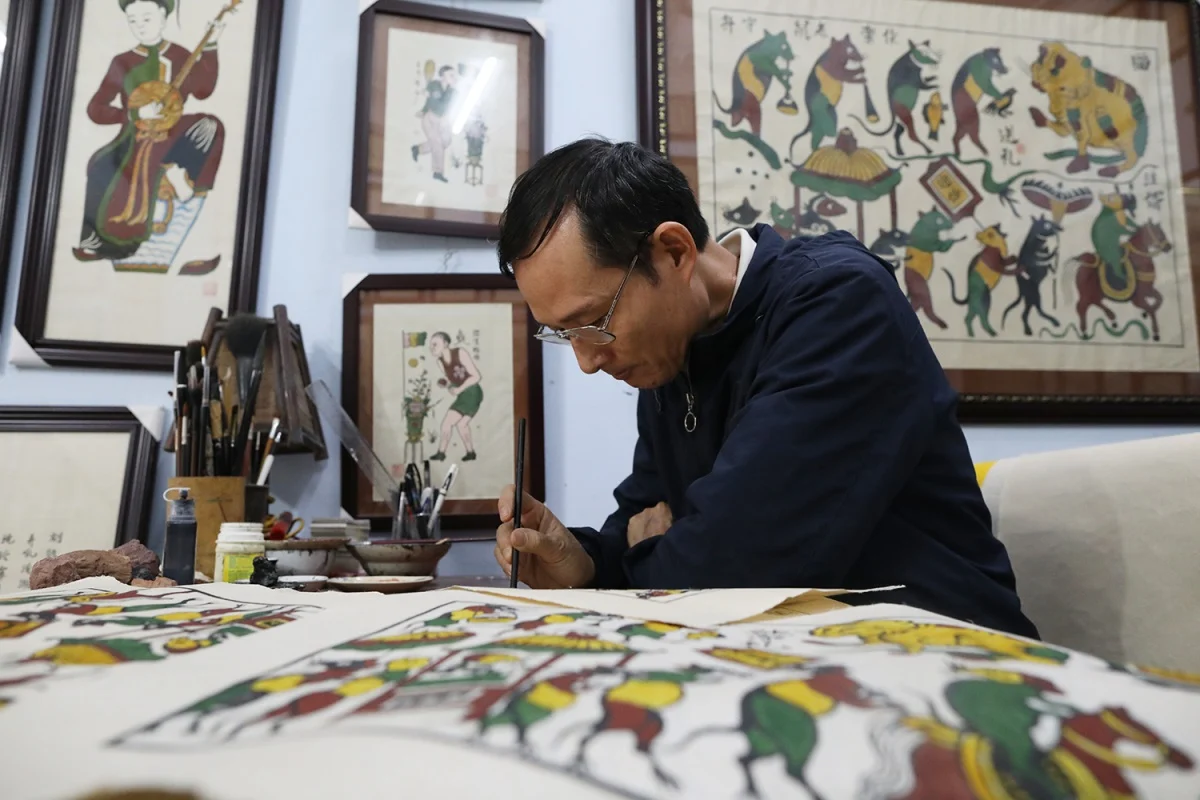
Photo: Collected